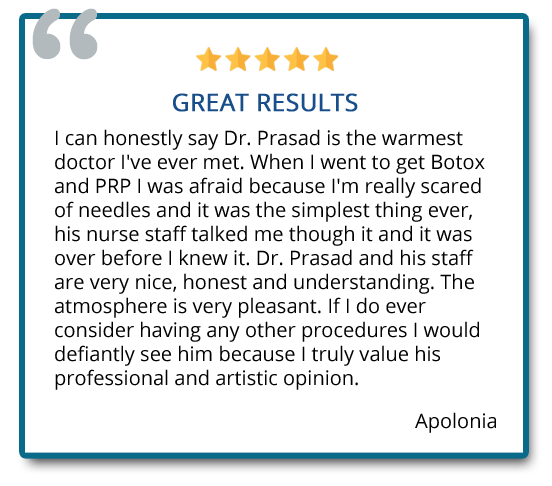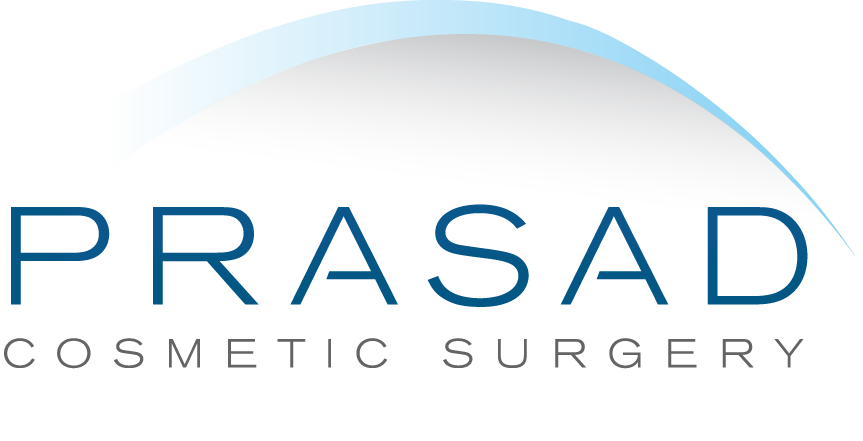Schedule Your Consultation with Dr. Prasad Here
- Home
- About Dr. Prasad
- Face & Eyes
Eyelifts
- Eyelid Surgery
- Eye lift Before and After Photos
- Asian Eyelid Surgery
- Upper Eyelid Surgery
- Upper Eyelid Hollow / Lower Brow Hollowing
- Under Eye Bag Surgery
- Eyelid Ptosis Surgery
- Transconjunctival Blepharoplasty
- Under Eye Fillers
- Eyelid Surgery Revision Specialist
- Thyroid Eye Disease
- Tear Trough Implants
- Eye Lift Questions and Answers
- Body
- Injectables
- Laser
- Hair Restoration
- Photos
- Hair Restoration Before and After Photos
- Eye lift Before and After Photos
- Upper Blepharoplasty Before and After
- Ptosis Surgery Before And After
- Facelift Before and After Photos
- Lip Enhancement Before and After Photos
- Under Eye Filler Before and After
- Blepharoplasty Before and After
- Lower Blepharoplasty Before and After Photos
- Eyelid Surgery Before and After
- Double Eyelid Surgery Before and After
- Contact Us
- Home
- About Dr. Prasad
- Face & Eyes
Eyelifts
- Eyelid Surgery
- Eye lift Before and After Photos
- Asian Eyelid Surgery
- Upper Eyelid Surgery
- Upper Eyelid Hollow / Lower Brow Hollowing
- Under Eye Bag Surgery
- Eyelid Ptosis Surgery
- Transconjunctival Blepharoplasty
- Under Eye Fillers
- Eyelid Surgery Revision Specialist
- Thyroid Eye Disease
- Tear Trough Implants
- Eye Lift Questions and Answers
- Body
- Injectables
- Laser
- Hair Restoration
- Photos
- Hair Restoration Before and After Photos
- Eye lift Before and After Photos
- Upper Blepharoplasty Before and After
- Ptosis Surgery Before And After
- Facelift Before and After Photos
- Lip Enhancement Before and After Photos
- Under Eye Filler Before and After
- Blepharoplasty Before and After
- Lower Blepharoplasty Before and After Photos
- Eyelid Surgery Before and After
- Double Eyelid Surgery Before and After
- Contact Us
Best Botox® Treatment Garden City & NYC
As one of the first doctors to use Botox® for cosmetic applications in the early 1990s, Dr. Amiya Prasad believes in personal customization and conservative application that suits his natural-looking aesthetic style. As always, Dr. Prasad makes sure to clearly explain to all his patients the factors needed to be understood, before giving his expert recommendation on the patient’s current facial issue.
He begins with scientific facts, which are genetics, health issues, and the huge influence of environmental factors. For patients, this type of approach sets them at ease, for what they perceive as their imperfections are seen by Dr. Prasad as their unique characteristic beauty that can be enhanced with a skilled and experienced touch.
More often than not, patients assume that aggressive treatments like surgery are the way to maintain or regain their intrinsic youth and beauty. However, Dr. Prasad, when fully aware of the patient’s problem, will only recommend the most beneficial option—which may or may not include surgery. In the case of wrinkles on the facial area, Botox® is often the better or only option when compared to surgery.
What is Botox?
Botox® is a liquid injected into the patient’s facial muscles. The main focus of this treatment is to zero in on muscles that make repetitive contractions or movements, like those in the forehead (occipitofrontalis muscles that encompass the entire width of the forehead), those that cause vertical wrinkles between the eyebrows and the nose (corrugator supercili muscles,) and those that cause wrinkles on the nose (procerus muscle.)
It was discovered centuries ago as part of a bacterium found in ham and sausage. It is a fact that this bacterium, which German scientist Van Emengem named Bacillusbotolinium (derived from the Latin word botolus meaning “sausage”) causes paralysis, extreme twitching, and even death, to name a few.
Botulinum toxic type A, also known as Botox® Cosmetic, is a safer derivative of this bacterium, used to minimize wrinkles through the careful and exact paralysis of facial muscles.
Botox® cannot be a treatment for permanent wrinkles that are not prompted by constant muscular contractions, nor is a surgical procedure advisable to erase wrinkles that are caused by normal facial reactions.
Where can Botox® be Injected?
Botox® is also most frequently injected in the glabellar area of one’s face, which in layman’s terms, refers to the muscles that control “frown lines”. Botox® is also injected into the muscles of the forehead to lessen lines and wrinkles and draw attention to the eyes.
It has also been applied to breasts to control drooping or sagging. Botox® is also known to cure physical ailments such as migraines and spinal diseases.
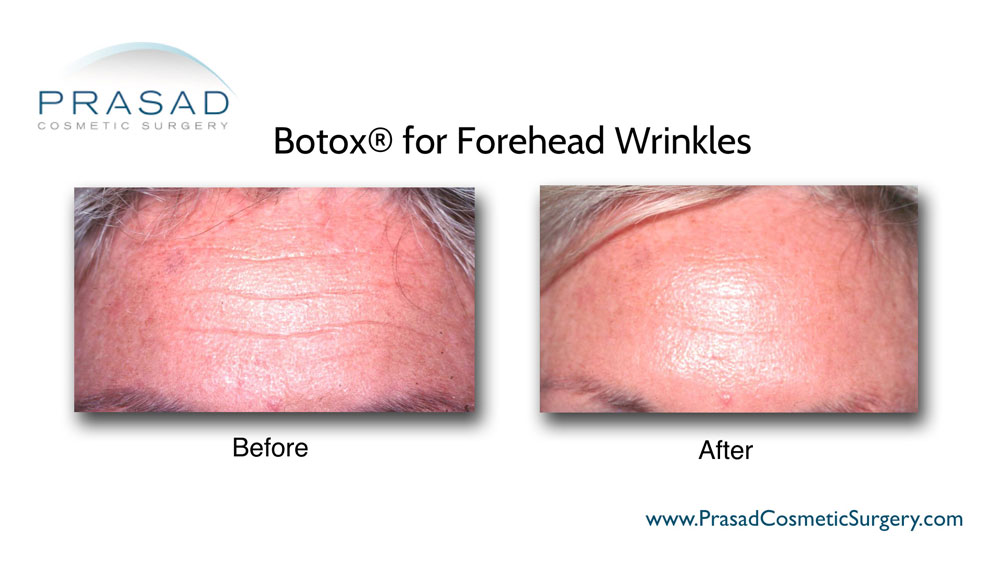
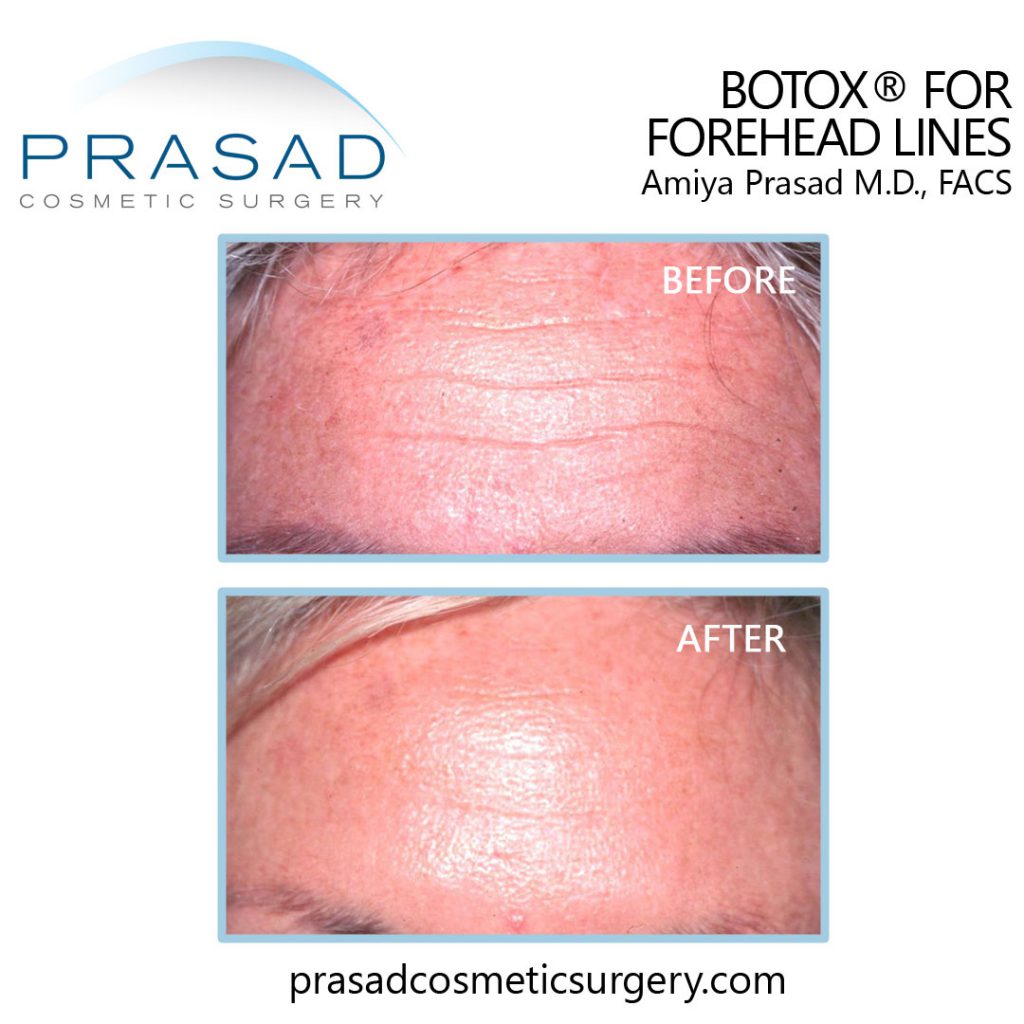
Natural Looking Botox® and Artistic Treatment
Through Dr. Amiya Prasad’s conservative way of performing this non-surgical procedure, Botox® reduces the visibility of wrinkles, fine lines, and creases around the eyes and face.
Dr. Prasad’s steady hand, perception of individual beauty, and artistic style ensure that his patients do not have a petrified look, but rather, that they look like a fresher version of themselves. Dr. Prasad believes in simply improving, and not tampering with, a patient’s natural beauty and facial structure.
What are Botox® Side Effects?
There have been side effects in patients noted down on other websites, such as eye-twitching, facial drooping, or asymmetry of the facial contour, which can occur within the first 24-48 hours and can be quickly remedied. With Dr. Prasad’s steady hand, and long-term successful use of Botox®, he assures his patients that these side effects are kept to a minimum.
The Benefits of Botox® in Cosmetic Use
The effect of Botox® generally lasts for about six months. However, some, such as beginners to this procedure, may need to go for another treatment after two months.
The reasons for these differences in effect may be attributed to a patient’s lifestyle, anatomy, and how well they absorb the substance.
Some circumstances that may affect the effectiveness of Botox® can include the following:
- continuous sun exposure,
- high-stress situations that may force facial muscles to contract more often,
- professions that require extreme emotional release like acting.
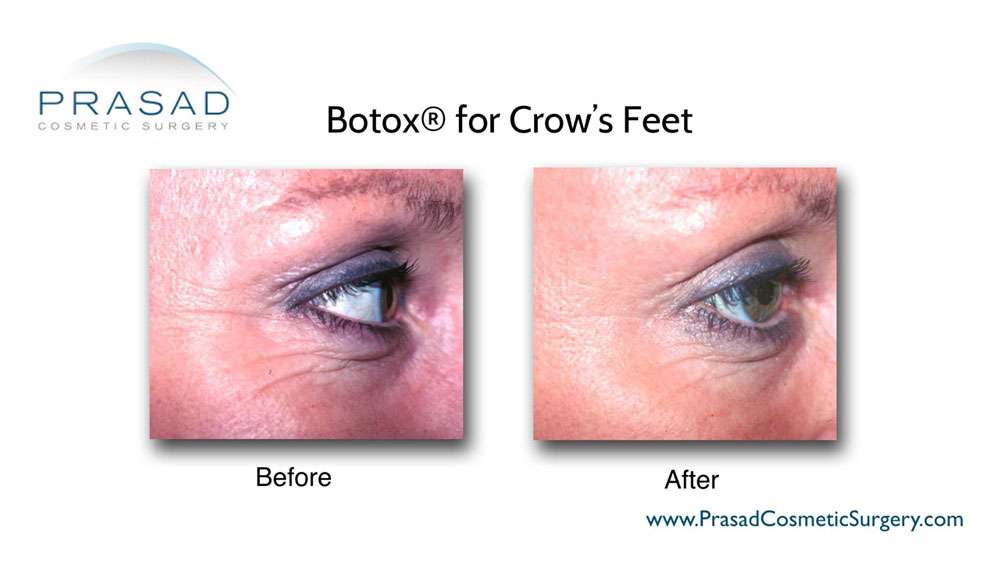
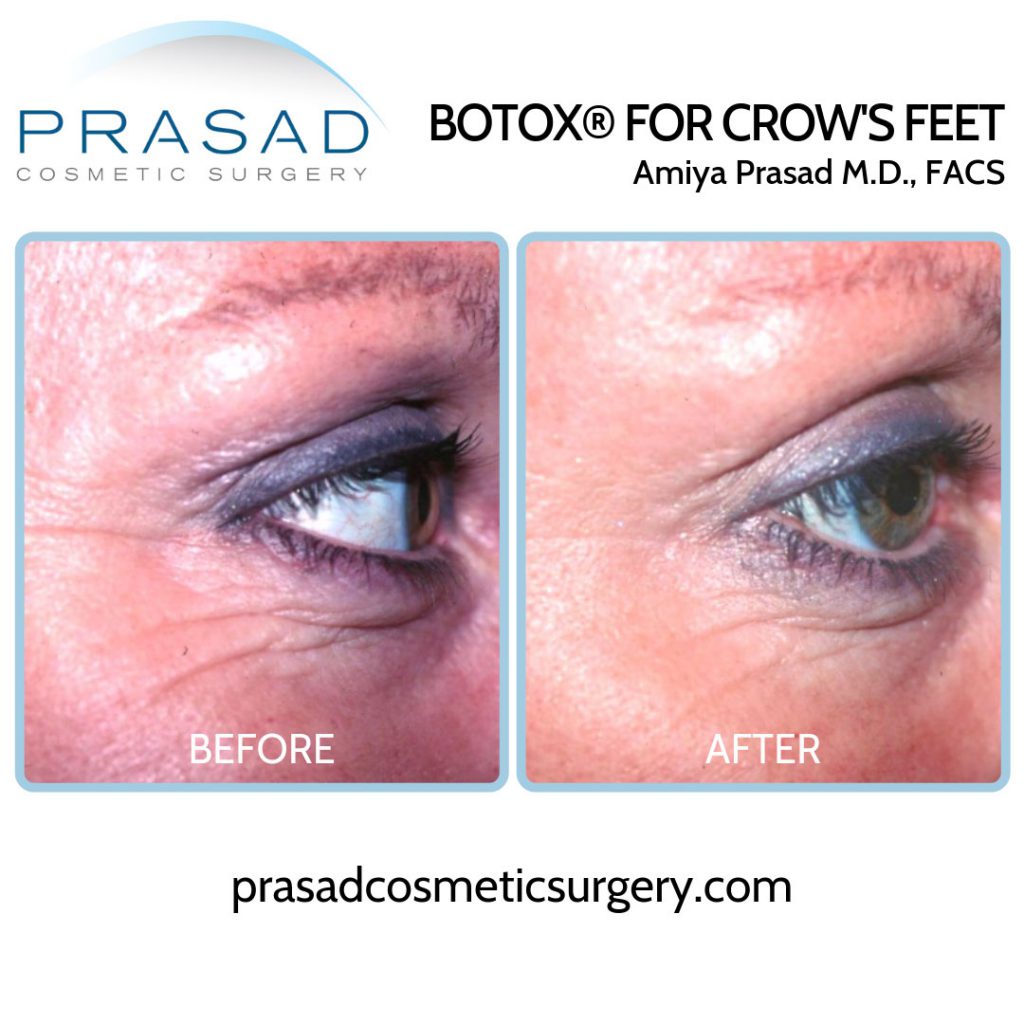
What You Need to Know
Once Dr. Amiya Prasad decides that Botox® is ideal for one’s facial enhancement, given that the patient also agrees, the treatment can be done right away. The patient may also leave immediately after the treatment.
As the muscles eventually move on from the “acquaintance stage” of Botox® to a more steady relationship, the effects will last longer. There are some recorded cases where the lines may reappear, but not exactly as they looked pre-Botox® treatment.
Some are afraid that life after not repeating the Botox® procedure will result in faces that will look even worse than before they used it, but this, fortunately, is a fallacy.
Does Botox® Injection Hurt?
Botox® injections are usually performed with a tiny needle or blunt cannula. Some individuals may experience a little stinging sensation but the Botox® component itself is not painful. Board-certified facial cosmetic Dr. Prasad uses a blunt cannula when placing Botox® which has several advantages over needles such as less bruising and swelling.
What Not to Do After Botox®?
After Botox® injection, Dr. Prasad will advise on the aftercare. As always, it is necessary to avoid lying down for four to six hours as the liquid sets into the muscles. Newbies to Botox® rejuvenation may expect some puffiness on the upper half of the face, but this gradually subsides within two to three days.
Ironically, the puffiness may make one simply look a bit different, but not so much to feel they don’t look like themselves.
Where to Get Botox®?
It is advised to get Botox® from highly-trained and experienced doctors to minimize risks. Board-certified Oculoplastic surgeon Dr. Amiya Prasad has two convenient offices in New York. You may call any of our offices in Manhattan, New York City at (212) 265-8877 or Garden City, Long Island at (516) 742-4636 for any inquiries.
Patient Reviews on Botox
